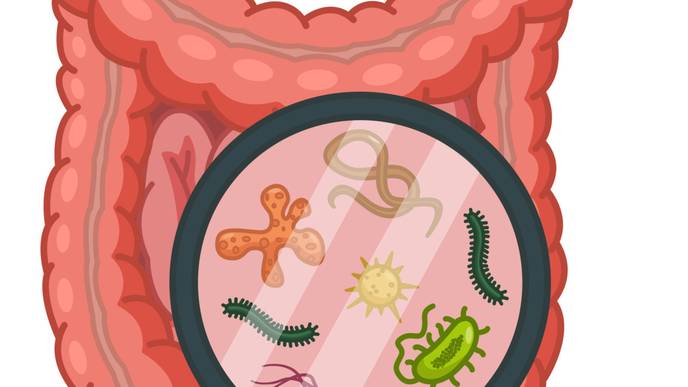By Carolyn Ledowsky
The Chemical Heritage Foundation recently played host to the MABIM Conference. I travelled to Philadelphia, USA to attend the two day conference in order to gain a more thorough understanding of how various conditions can be approached from both a holistic and individualistic perspective and the subsequent affect this could have on genes.
A partner of MTHFR Support, MABIM holds true that one of its paradigmatic cornerstones is to provide tools for developing targeted therapies to address chronic illness and to optimise homeostasis in patients.
The knowledge imparted upon conference participants was extraordinary with a number of highlights becoming apparent in regards to the development of new smartphone apps; dietary restrictions as well as pre-screening for the warning signs of Pyroluria. A personal highlight was being invited to sit on the panel on the second day to assist with question time and share my experience. I look forward to speaking at the second conference to be held in Dallas, Texas later in the year.
Sterling Hill
Eight years ago, Sterling Hill was a successful businesswoman. Suddenly and inexplicably struck down with clotting issues, she had little to no success in receiving answers nor adequate treatment for her medical issues. Fast forward to 2015 and she is now the author responsible for Sterling’s App, a comprehensive chart utilising 23andme results for your SNPs. This came about in order to foster and strengthen partnerships between patients and practitioners in helping to manage an individualised treatment plan. Sterling revealed that she would shortly publish an updated version of her app which will include many more SNPs, giving us the ideal opportunity to gain a greater understanding of genes and factors influencing health. It will be tested on our site as a world wide first.
Sulphur restriction
One of the key messages to emerge from the conference is that we need to move away from the notion that sulphur is damaging when it comes to CBS 699T. As the third most abundant mineral in the body, sulphur is vital in maintaining skin health and overall wellness. It is understood that the general population eats a diet deficient in sulphur which could be contributing to the initiation and progression of many inflammatory and degenerative diseases.
Sulphur is required for the synthesis of glutathione (one of the body’s most important antioxidants). High levels of glutathione can prevent damage by free radicals which are thought to be the major cause of cellular ageing. Those with sulphur sensitivities should only restrict it for a few weeks whilst balancing the CBS pathway.During this time be cautious of meals containing egg yolks, meat, poultry, fish, garlic, onions, Brussels sprouts, asparagus, kale as well as fermented food and drinks such as sauerkraut and kombucha . Sulphur should then be slowly reintroduced once the CBS pathway has been improved.
Pyroluria
The other key take out, which I have suspected for some time is that pyrroles are a function of a disturbed CBS/oxalate pathway issue and not a disease in their own right. It does raise questions as to why Australia is experiencing an endemic of sorts. Do we test more? Do we have more oxalate issues which are negatively impacting upon our B6? Oxalates also disturb zinc levels. Are we consuming a diet overly rich in leafy greens like spinach, as well as sweet potato, celery, carrots and soy? This is not to suggest that we should label the aforementioned foods as ‘bad’, but rather that people should exercise a certain level of caution particularly if they have a family history of thyroid disease, autism, cystic fibrosis, kidney stones, urinary tract infections and recurrent candida.
Take the questionnaire below to give you a clue as to whether you may have Pyroluria. If you answer ‘yes’ to fifteen or more, the chances that Pyroluria is present is high and I recommend formal testing.
PYROLURIA QUESTIONNAIRE
1. Little or no dream recall
2. White spots on finger nails
3. Poor morning appetite +/- tendency to skip breakfast
4. Morning nausea
5. Pale skin +/- poor tanning +/- burn easy in sun
6. Sensitivity to bright light
7. Hypersensitive to loud noises
8. Reading difficulties (e.g. dyslexia)
9. Poor ability to cope with stress
10. Mood swings or temper outbursts
11. Histrionic (dramatic) tendency
12. Argumentative/enjoy argument
13. New situations or changes in routine (i.e., traveling) particularly stressful
14. Much higher capability and alertness in the evening, compared to mornings
15. Poor short term memory
16. Abnormal body fat distribution
17. Belong to an all-girl family with look-alike sisters
18. Dry skin
19. Anxiousness
20. Reaching puberty later than normal
21. Difficulty digesting, a dislike of protein or a history of vegetarianism
22. Tendency toward being a loner and/or avoiding larger groups of people
23. Stretch marks on skin
24. Poor sense of smell or taste
25. Feel very uncomfortable with strangers
26. Frequently experience fatigue
27. A tendency to overreact to tranquilizers, barbiturates, alcohol or other drugs (in other words, a little produces a powerful response)
28. A tendency toward anemia
29. History of mental illness or alcoholism in family
30. Easily upset by criticism
31. Sweet smell (fruity odor) to breath or sweat when ill or stressed
32. Prone to acne, eczema or psoriasis
33. A tendency toward feeling anxious, fearful and carrying lifelong inner tension
34. Difficulty recalling past events or people
35. Bouts of depression or nervous exhaustion
36. Prone to frequent colds or infections
Next week’s blog: Oxalates
[thrive_text_block color=”light” headline=””]
Do you understand how Oxalates impact your patients’ health?
Do you have patients with hormone, joint and ligament issues?
This webinar gives you the knowledge to understand the causes, issues, and management of Oxalates.
[maxbutton id=”12″ url=”https://www.mthfrsupport.info/oxalateswebinar” text=”Purchase Your On-Demand Webinar ” window=”new” ]
[/thrive_text_block]









